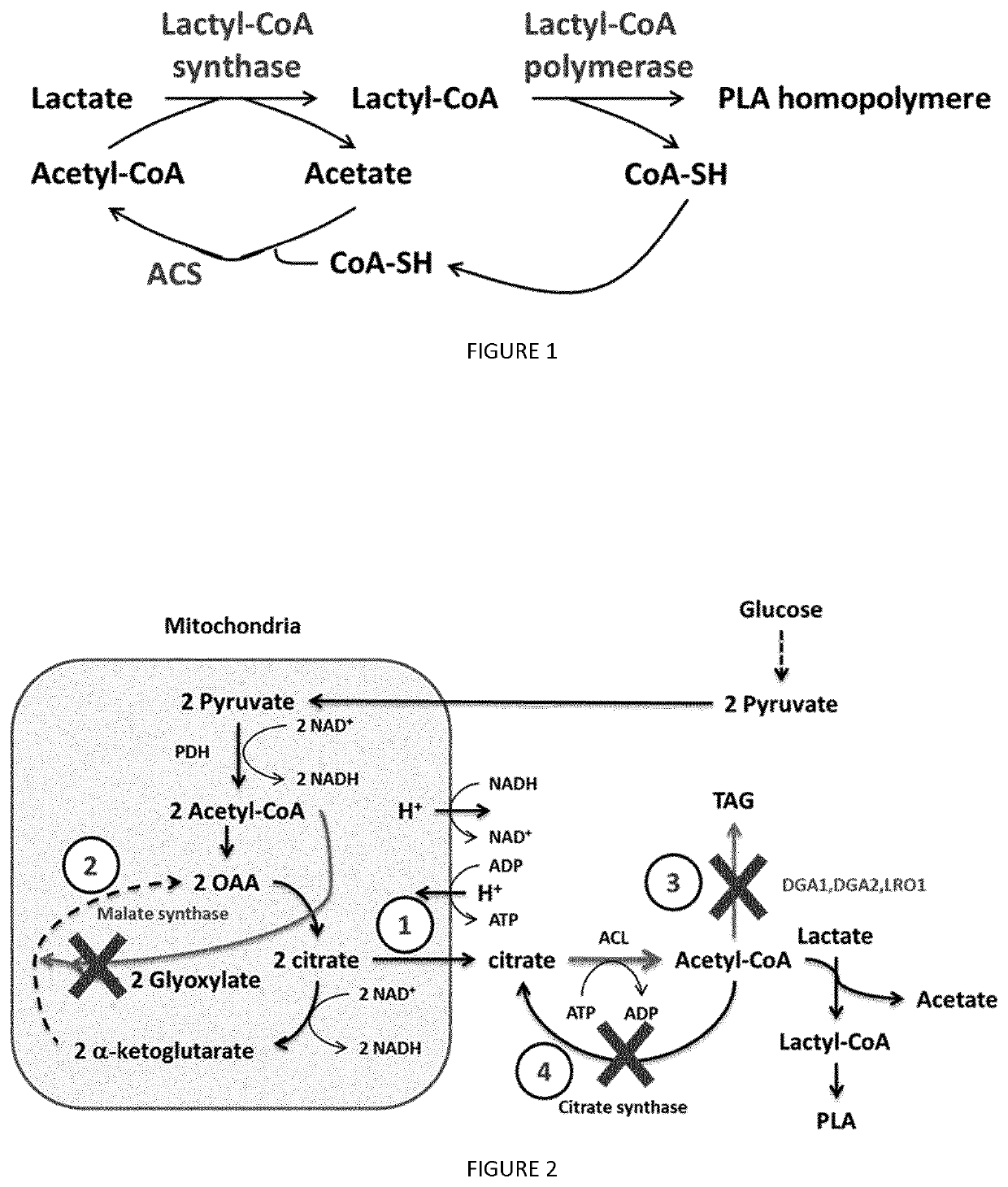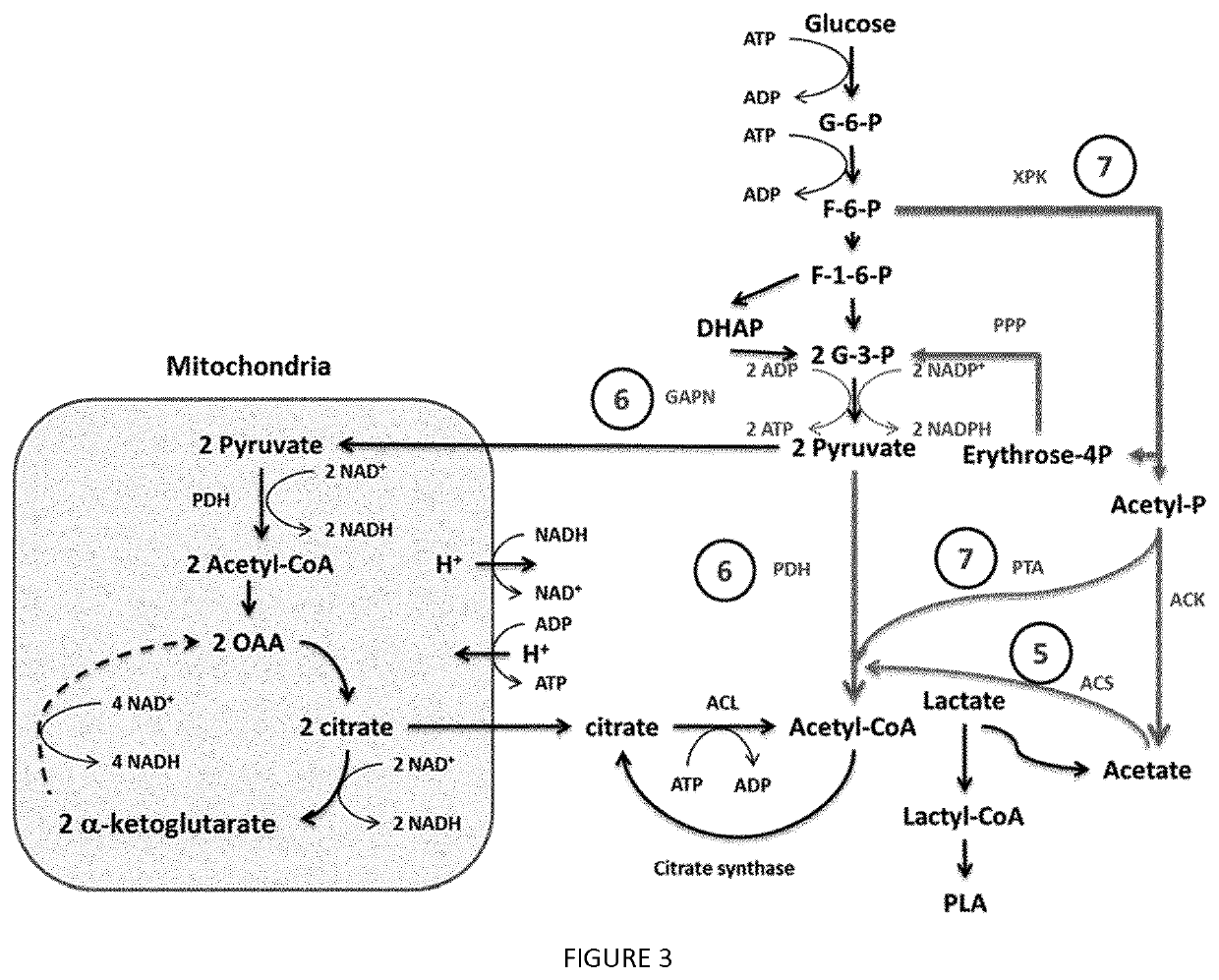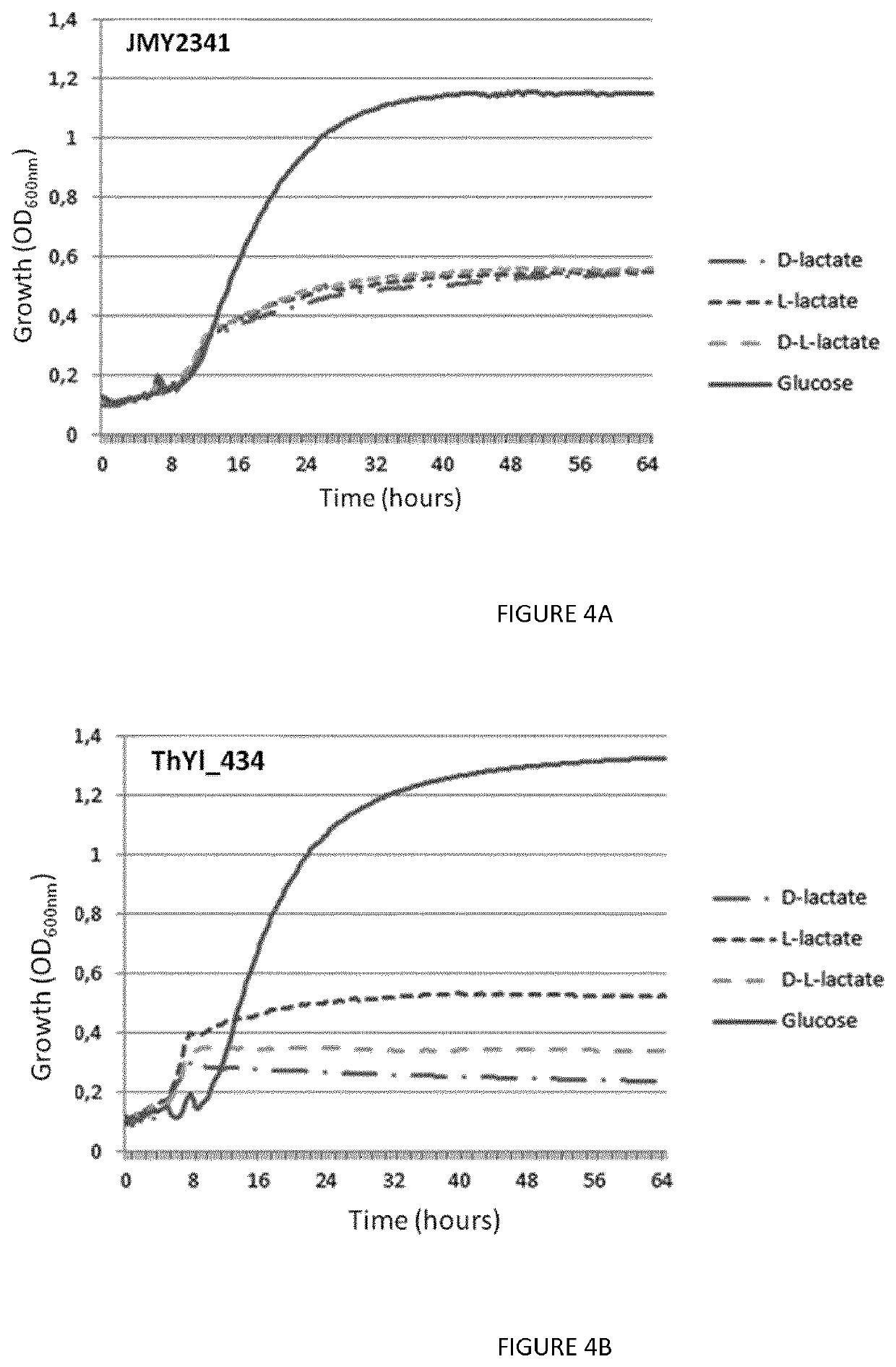Recombinant yeast cells producing polylactic acid and uses thereof
a technology of recombinant yeast cells and polylactic acid, which is applied in the direction of enzymology, biochemistry apparatus and processes, transferases, etc., can solve the problems of reducing affecting the quality of final products, and bringing additional economic and environmental costs, so as to improve the efficiency of lactic acid production and reduce the consumption of la as carbon source, the effect of improving the metabolism of lactic acid
- Summary
- Abstract
- Description
- Claims
- Application Information
AI Technical Summary
Benefits of technology
Problems solved by technology
Method used
Image
Examples
example 1
ion of Yeast Strains Unable to Assimilate Lactic Acid
[0155]Construction of Disrupted Strains Followed by Marker Excision
[0156]The disruption cassettes were generated by PCR amplification on Y. lipolytica genomic DNA. It consists in a first amplification of a promoter region (P) and a termination region (T) of the gene to be deleted. The primers were designed as described by Fickers and coworkers (2003) and / or as described by Beopoulos et al. (2008 and 2011). After a secondary amplification consisting in a fusion of the P and T fragments, the resulting PT cassette was then inserted into the PCR4®Blunt-TOPO vector from Life Technologies (Carlsbad, Calif.). Then the auxotrophic marker URA3ex or LEU2ex was inserted into the PT vector through the IsceI specific cloning site to generate the corresponding plasmid (PUT or PLT, respectively). The PUT or PLT disruption cassette was introduced into Y. lipolytica by transformation with the lithium acetate method (Barth et al. 1996). Transforman...
example 2
ion of Yeast Strains Capable of Producing PLA
[0163]Cloning and Expression of Genes Under the Control of the TEF Constitutive Promoter
[0164]Genes were amplified by PCR and placed under the control of the yeast TEF constitutive promoter (pTEF). Coding gene sequences were then inserted between the BamHI-Avrll sites of the JMP62-pTEF expression vector, containing the URA3ex or LEU2ex selective marker. Plasmids were then digested with NotI restriction enzyme and the released coding gene containing fragment was used to transform the strains by the lithium acetate method (Barth et al. 1996). Transformants were selected by their respective auxotrophy on the adequate minimal medium. Marker rescue was performed after transformation with the replicative plasmid pUB-CreI as described by Fickers and coworkers (2003).
[0165]Yeast Strain
[0166]Y. lipolytica strain used was derived from the strain JMY2159 described in Beopoulos et al., 2014 (QPF). The Y1DLD1 gene (SEQ ID No12) was deleted to produce ...
example 3
nt of PLA Production by Adding Two Copies of Genes Pctp Opt V193A or PhaC1 Opt E130D S325T S477R Q481M
[0185]Yeast Strain Construction
[0186]Y. lipolytica strain used was derived from the strain ThY1_976 described in Example 2 and expressing one copy of a variant of Pctp from C. propionicum (SEQ ID No1) with mutation V193A (CpPctp opt V193A) and one copy of a variant of PHA synthase (PhaC1p opt E130D S325T S477R Q481M) from P. aeruginosa PAO1 with mutations E130D; S325T; S477R; Q481M (SEQ ID No11). A second copy of the gene encoding for the variant of Pctp from C. propionicum (SEQ ID No1) with mutation V193A (CpPctp opt V193A) and / or a second copy of the variant of PHA synthase (PhaC1p opt E130D S325T S477R Q481M) from P. aeruginosa PAO1 with mutations E130D; S325T; S477R; Q481M (gene SEQ ID No15) were expressed in the strain ThY1_976 with the same targeting than the first copy (cytosol or peroxisome).
[0187]The different strains used in this example were built with one or two copies o...
PUM
| Property | Measurement | Unit |
|---|---|---|
| dispersity | aaaaa | aaaaa |
| dispersity | aaaaa | aaaaa |
| concentration | aaaaa | aaaaa |
Abstract
Description
Claims
Application Information
 Login to View More
Login to View More - R&D
- Intellectual Property
- Life Sciences
- Materials
- Tech Scout
- Unparalleled Data Quality
- Higher Quality Content
- 60% Fewer Hallucinations
Browse by: Latest US Patents, China's latest patents, Technical Efficacy Thesaurus, Application Domain, Technology Topic, Popular Technical Reports.
© 2025 PatSnap. All rights reserved.Legal|Privacy policy|Modern Slavery Act Transparency Statement|Sitemap|About US| Contact US: help@patsnap.com



